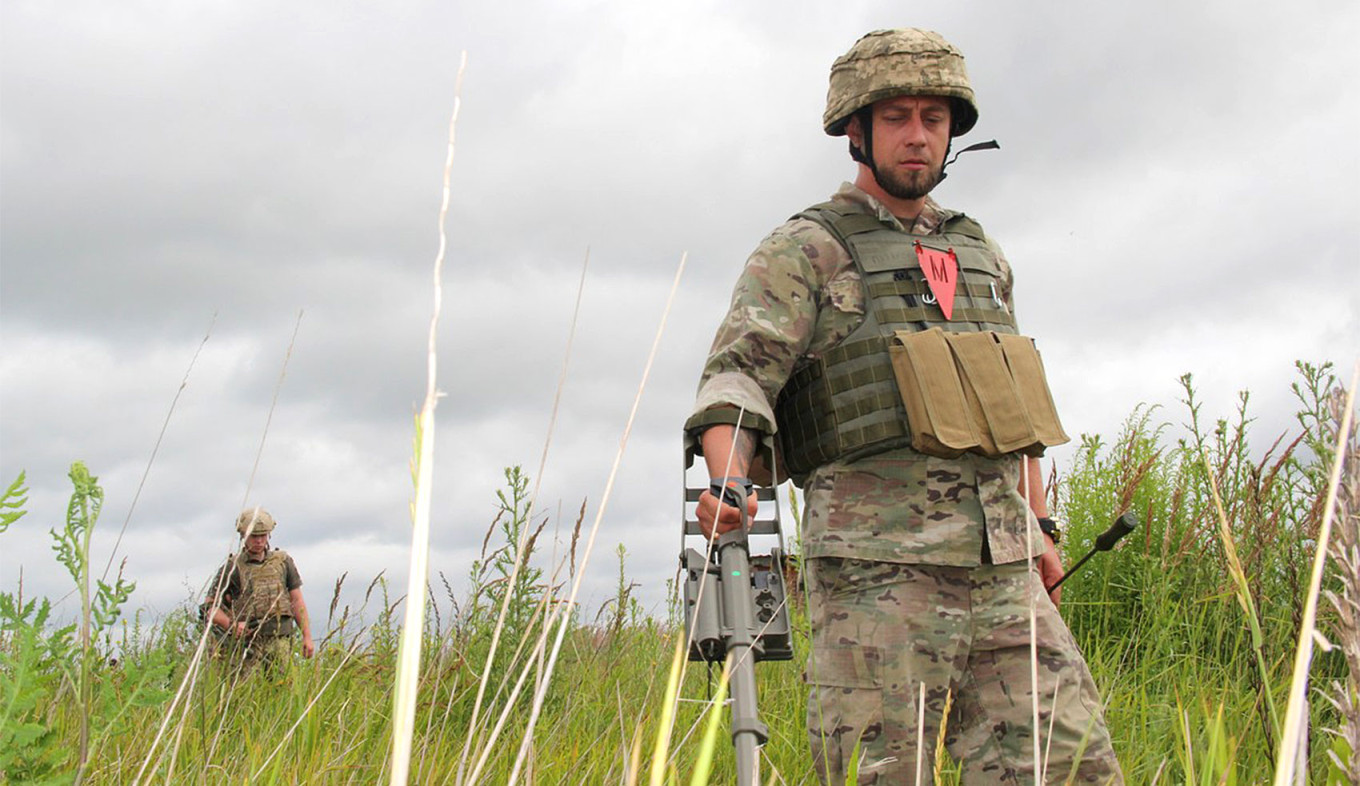Russia has improved its strategies to impede the Ukrainian counteroffensive in the southern region of Ukraine, according to the UK Defense Intelligence.
The UK Ministry of Defense (UK MoD), in its most recent evaluation on July 4, said that Moscow has focused on and honed tactics to hinder Ukrainian counteroffensive operations in Southern Ukraine during the past few weeks.
The ministry observed that Russia has heavily employed anti-tank mines on the battlefield as a part of its tactics.
Furthermore, dense minefields in specific areas indicate that the Russian forces have chosen to surpass the established limits outlined in Russian military doctrine for their usage.
The intelligence service reported that following the successful slowing down of the Ukrainian Defense Forces’ counteroffensive, Russia attempted to target Ukrainian armored vehicles using a combination of drones, attack helicopters, and artillery.
Latest Defence Intelligence update on the situation in Ukraine – 4July 2023.
Find out more about Defence Intelligence's use of language: https://t.co/NrXBzGy3WF
🇺🇦 #StandWithUkraine 🇺🇦 pic.twitter.com/nLJmQiKznq
— Ministry of Defence 🇬🇧 (@DefenceHQ) July 4, 2023
The UK MoD stated that while Russia initially achieved some success with this strategy during the early stages of Ukraine’s counteroffensive, its forces are still grappling with significant vulnerabilities.
These weaknesses include overextended units and a scarcity of artillery munitions, which hinder their ability to sustain continued military operations effectively.
In recent weeks, various media outlets have reported, citing anonymous US officials, that the Ukrainian counteroffensive has experienced a slow start, and the outcomes observed in the initial weeks have been described as “sobering.”
Despite these assessments, the officials are cautious and do not rush to form definitive conclusions.

Amid the ongoing counteroffensive of the Ukrainian armed forces, Russia has made significant efforts to enhance and adjust its tactics, starkly contrasting its initial approach during the early stages of the war, where it incurred substantial losses.
EurAsian Times previously provided coverage on Russia’s deployment of what is colloquially called “suicide tanks” in the Ukraine war.
This alarming tactic involves retrofitting outdated Soviet-era tanks with explosives, guiding them remotely toward Ukrainian trenches, and initiating detonation to create devastating fireballs upon impact.
Russia Deploying Mines At ‘Industrial Level’
Russia has undertaken significant measures to fortify its defenses along the extensive 1,000-kilometer (600-mile) front line in the ongoing conflict. This includes the construction of heavily fortified structures and installations.
Moscow has also focused on enhancing its electronic warfare capabilities to diminish Ukraine’s advantage in combat drones.
Furthermore, it has repurposed large conventional bombs from its extensive Cold War-era arsenal into precision-guided gliding munitions, enabling the striking of targets without exposing its warplanes to risks.
These evolving tactics by Russia, combined with increased troop deployments and improved weaponry, pose considerable challenges for Ukraine in achieving a swift and decisive victory.
The potential outcome now leans towards a prolonged battle of attrition, where Ukraine’s ability to secure a quick triumph becomes increasingly uncertain.
In addition to the aforementioned evolving tactics, it has been reported that Russian soldiers have been actively placing thousands of landmines.
Michael Newton, who leads the Ukraine landmine clearing organization HALO Trust program, has said, “What we’re seeing is just industrial level… industrial mine-laying.”
According to a British Royal United Services Institute report, Russia has been employing a combination of anti-tank and anti-personnel mines in the conflict.
These mines play a crucial role within defensive fortifications, particularly in southern and eastern Ukraine areas under Russian occupation.
These fortified positions aim to channel advancing infantry into vulnerable positions. This will make the advancing Ukrainian troops susceptible to counterattacks and intense artillery barrages.
In a video shared by the Russian Defense Ministry on Telegram, a Russian soldier stated, “We use [mines] in certain crossroads to cover our troops on the flanks so that the enemy doesn’t break through.”
Meanwhile, various mines are being utilized in the conflict, ranging from the TM-62, which detonates upon the pressure of a passing vehicle, to the advanced PTKM-1R, equipped with sensors that detect and deploy submunitions on vehicles.
Human Rights Watch has documented the use of over a dozen types of mines in Ukraine since the commencement of Russia’s full-scale invasion last year.
Furthermore, there have been reports of banned rocket-fired anti-personnel mines, commonly called “butterfly mines,” being deployed by both sides of the conflict.
Using such mines is internationally prohibited due to their indiscriminate nature and potential for causing harm to civilians.
Nonetheless, in its extensive network of defensive fortifications, Russia has highly likely incorporated the deployment of mines with other defensive elements such as concrete “dragon’s teeth,” iron-made “hedgehogs,” barbed wire, trenches, and ditches.
- Contact the author at ashishmichel(at)gmail.com
- Follow EurAsian Times on Google News